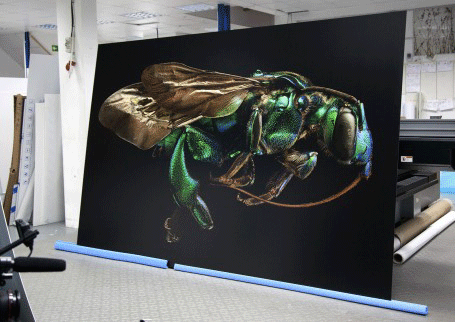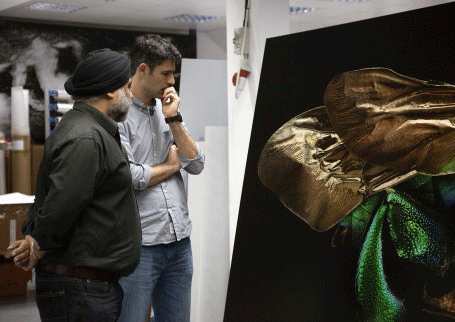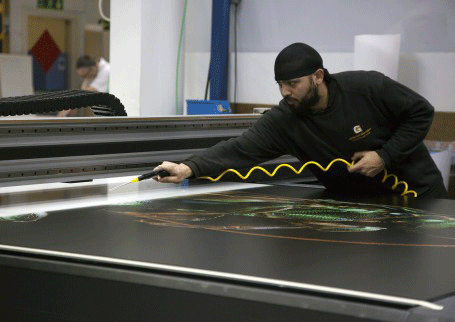 Photographer, Levon Biss, makes the microscopic world visible to the unaided eye. His exhibit, Microsculpture, is a macro photography project that captures insects in all their detailed-glory on large-scale printed Dibond aluminum composite. What started out as a side project in his home, featuring bugs caught by his son, grew into a dream project worthy of entomologists from the Oxford University Museum of Natural History.
Photographer, Levon Biss, makes the microscopic world visible to the unaided eye. His exhibit, Microsculpture, is a macro photography project that captures insects in all their detailed-glory on large-scale printed Dibond aluminum composite. What started out as a side project in his home, featuring bugs caught by his son, grew into a dream project worthy of entomologists from the Oxford University Museum of Natural History.
With free reign to choose from over seven million insects, Biss picked the most intricately composed, beautifully detailed, and colorful specimens the museum had to offer. The compilation will be presented in the main court of the Natural History Museum, showcasing the museum’s entomology collection in a stunning new way. Biss can now boast having worked with specimens as special as his son’s collection to that of biologists, Charles Darwin and Alfred Russel Wallace. It’s a win-win for both the photographer and the museum’s internationally important insect collection; both gaining welcomed exposure.
 Biss is a UK photographer with a passion for combining his love for nature and photography. His process and expertise with lighting is perhaps the most exhilarating aspect of his compositions. Each image is derived from 8,000 to 10,000 individual photographs. The volume of images is made up of specific lighting techniques used for every part of the subject. “Each section is lit differently with strobe lights to bring out the micro sculptural beauty of that particular section of the body,” Biss explains. His technical equipment included, “…a 36-megapixel camera with a 10x microscope objective attached to it via a 200mm prime lends.” Biss would shoot just one antenna, change the lighting, and then move onto another tiny part of the body where the lighting would be completely different. The process is continued throughout the whole surface area of the insect.
Biss is a UK photographer with a passion for combining his love for nature and photography. His process and expertise with lighting is perhaps the most exhilarating aspect of his compositions. Each image is derived from 8,000 to 10,000 individual photographs. The volume of images is made up of specific lighting techniques used for every part of the subject. “Each section is lit differently with strobe lights to bring out the micro sculptural beauty of that particular section of the body,” Biss explains. His technical equipment included, “…a 36-megapixel camera with a 10x microscope objective attached to it via a 200mm prime lends.” Biss would shoot just one antenna, change the lighting, and then move onto another tiny part of the body where the lighting would be completely different. The process is continued throughout the whole surface area of the insect.
 In macro photography the difficulties can be challenging with severely limited depth-of-field, vibration problems and diffraction. The high-magnification images are fully appreciated using specialized techniques harnessed by such an obviously experienced photographer, providing a peek into the microscopic realm. Each shoot took up to three weeks to complete and, as explained in the video embedded below, a single image is comprised of approximately 30 different sections.
In macro photography the difficulties can be challenging with severely limited depth-of-field, vibration problems and diffraction. The high-magnification images are fully appreciated using specialized techniques harnessed by such an obviously experienced photographer, providing a peek into the microscopic realm. Each shoot took up to three weeks to complete and, as explained in the video embedded below, a single image is comprised of approximately 30 different sections.
The portraits are 10 feet in length and printed on Dibond aluminum composite material using a Direct to Media UV printing service, Genesis Imaging. Each tiny insect specimen transforms into a large-scale high-resolution print, inviting a unique chance to see these creatures up-close.
information and photography courtesy of Genesis Imaging

